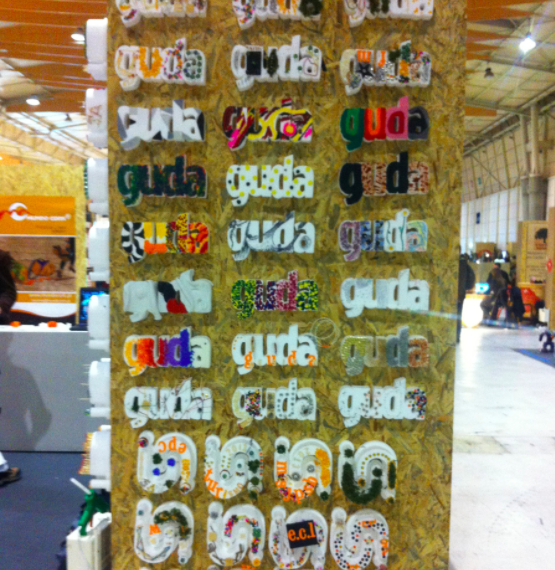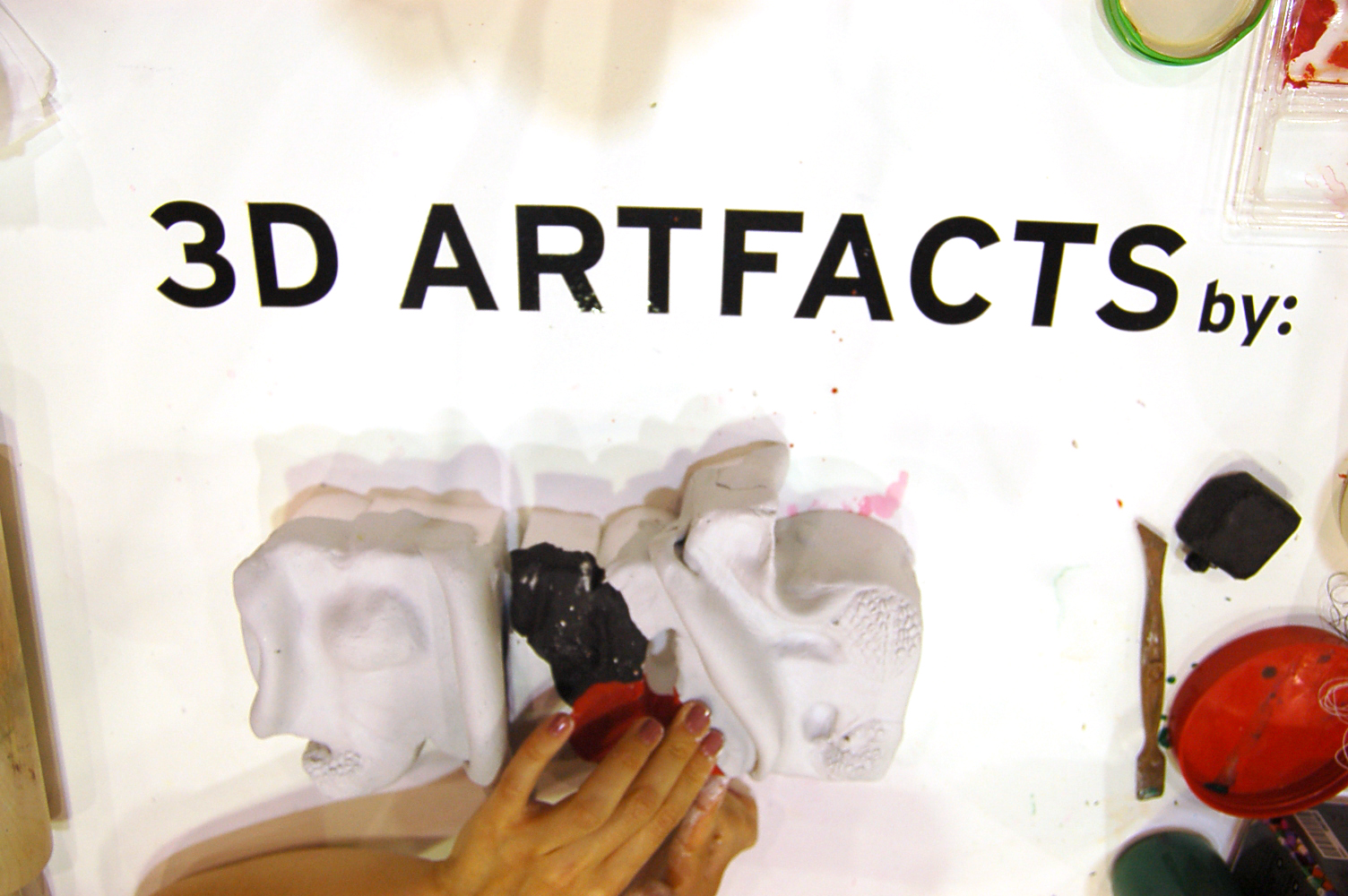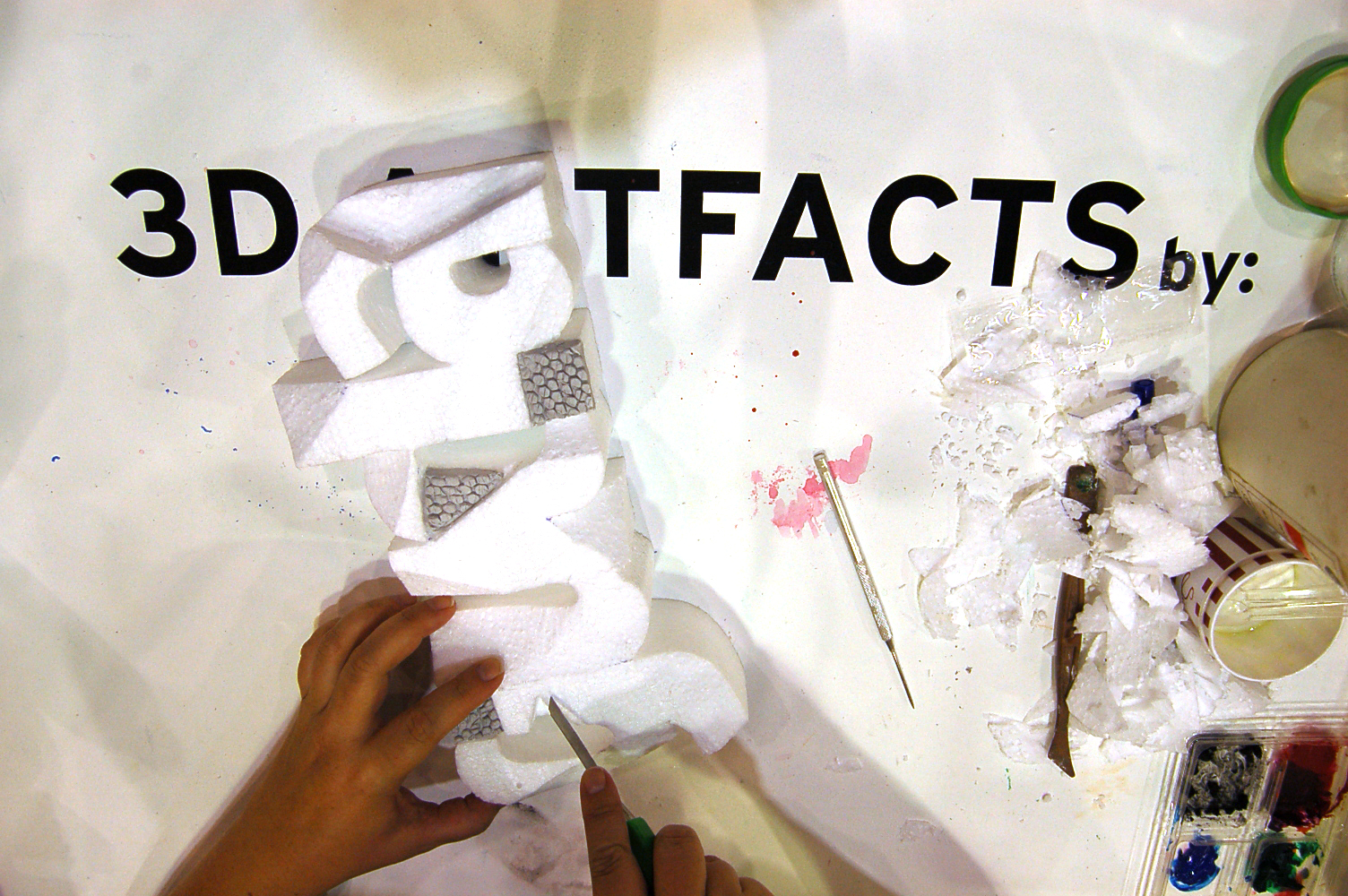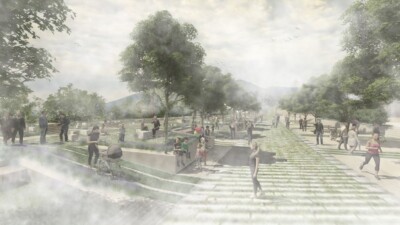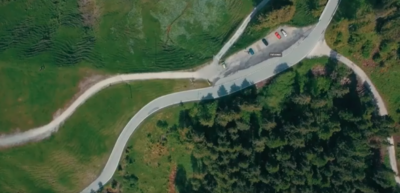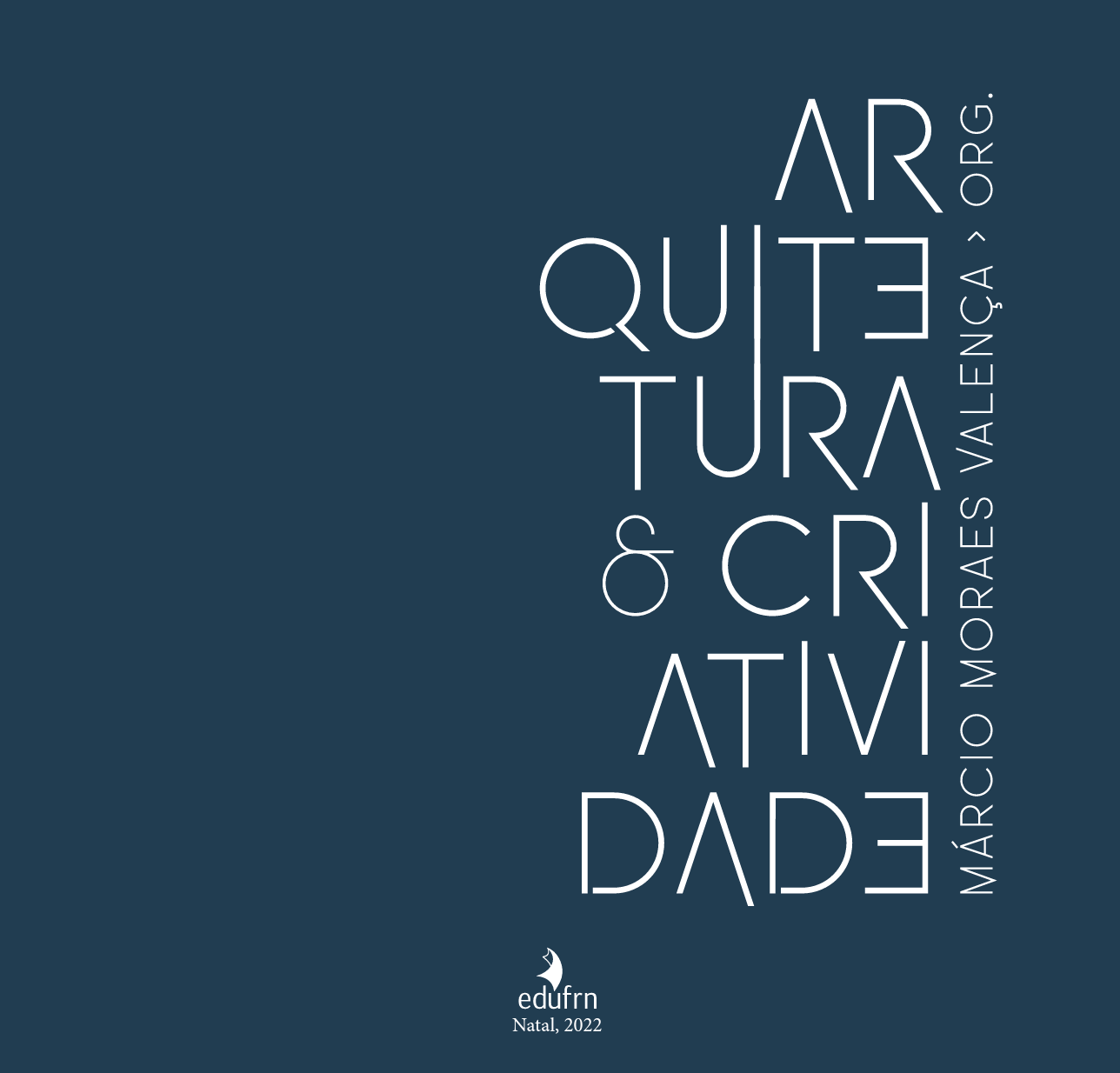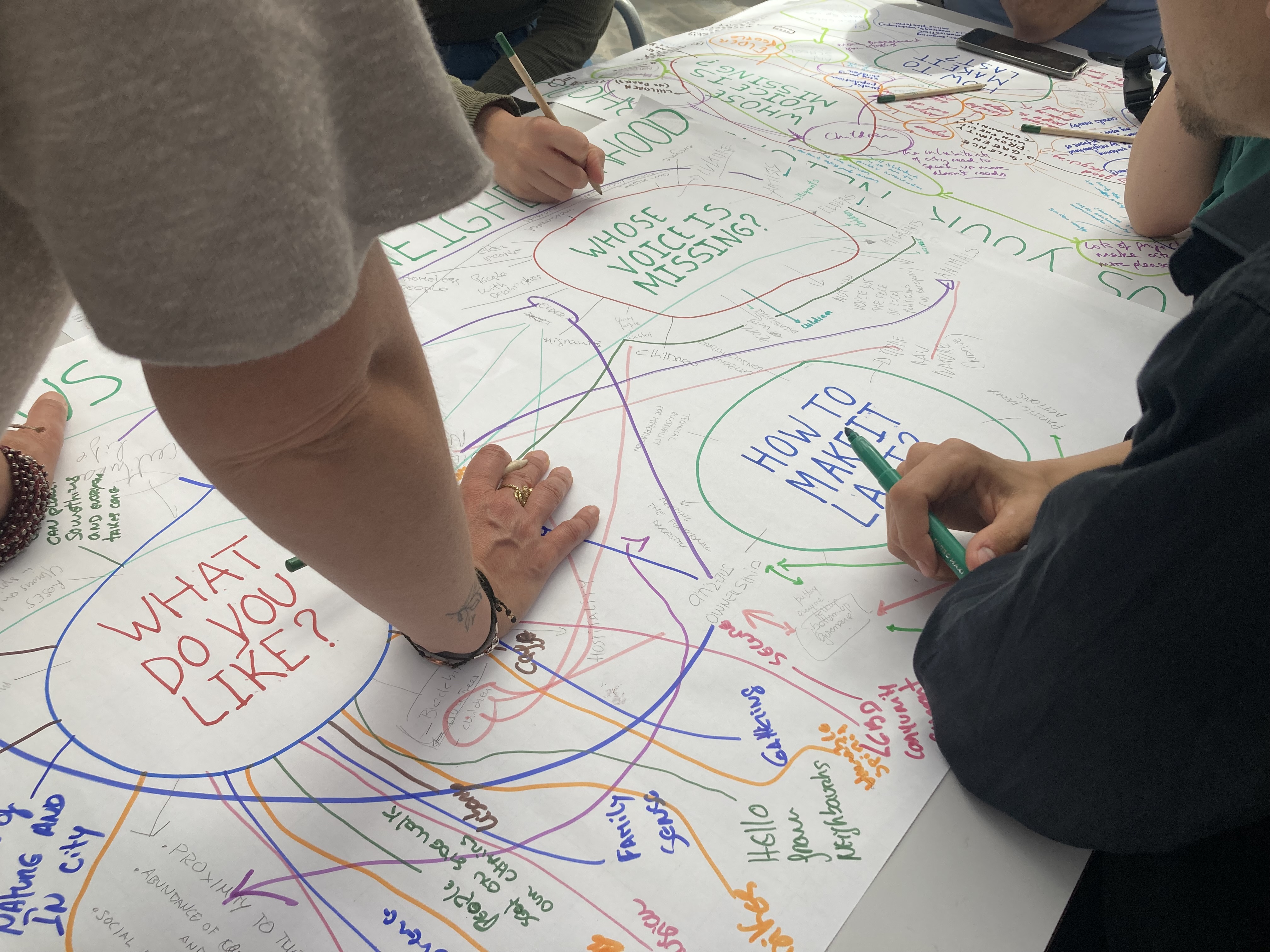Community Based Arts Projects (CAP)
CHALLENGES ADDRESSED
Score impact
Nature
Wellbeing
Health
Mobility
Participation
Economy
DESCRIPTION
Open meetings facilitated and organized in small groups in which participants are invited to debate a specific thematic. This method allows to explore and develop bottom-up and grassroots community development skills for people within their own communities. Participants can identify their most pressing social determinants, with positive and negative aspects of their environment, bringing social justice and environmental sustainability. The method also assists people to gain a clearer understanding of the principles of community development and community capacity building, increasing awareness and understanding of the main themes, terms and definitions.
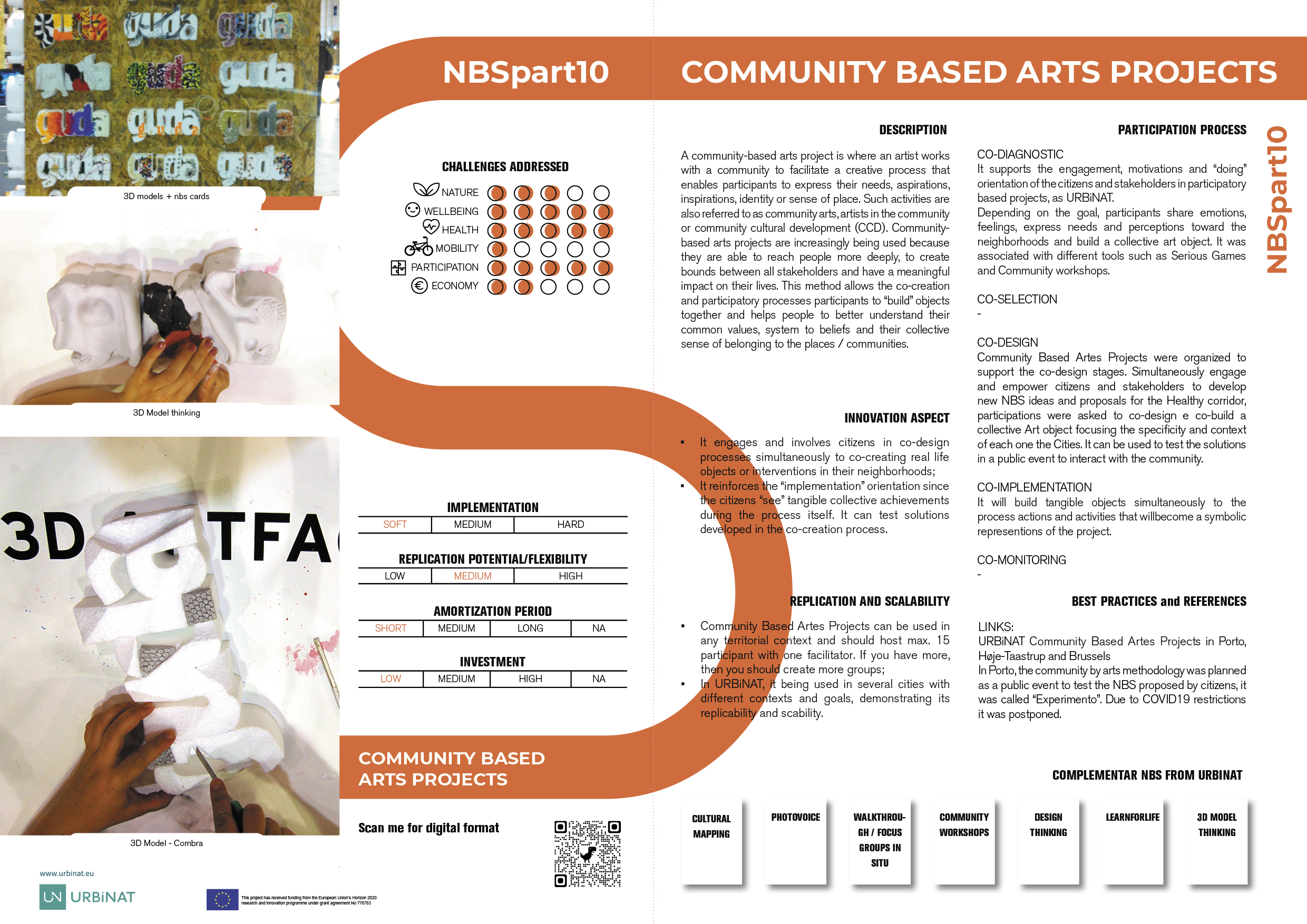
[PDF Download] Community Based Arts Projects
A community-based arts project is where an artist works with a community to facilitate a creative process that enables participants to express their needs, aspirations, inspirations, identity or sense of place. Such activities are also referred to as community arts, artists in the community or community cultural development (CCD). Community- based arts projects are increasingly being used because they are able to reach people more deeply, to create bounds between all stakeholders and have a meaningful impact on their lives. This method allows the co-creation and participatory processes participants to “build” objects together and helps people to better understand their common values, system to beliefs and their collective sense of belonging to the places / communities.
INNOVATION ASPECT
- It is a method that involves citizens in solution- based actions around neighbourhoods issues. That is not only essential, but smart, because they are experts in that area and for sure have innovative ideas for solving long term problems. The method assists to arise this invisible wisdom and create a collective view for the community future.
REPLICATION AND SCALABILITY
- Community workshops can be used in any territorial context and should host max. 15 participant with one facilitator. If you have more, then you should create more groups. In URBiNAT, it was used in several cities with different contexts and goals, demonstrating its replicability and scability.
PARTICIPATION PROCESS
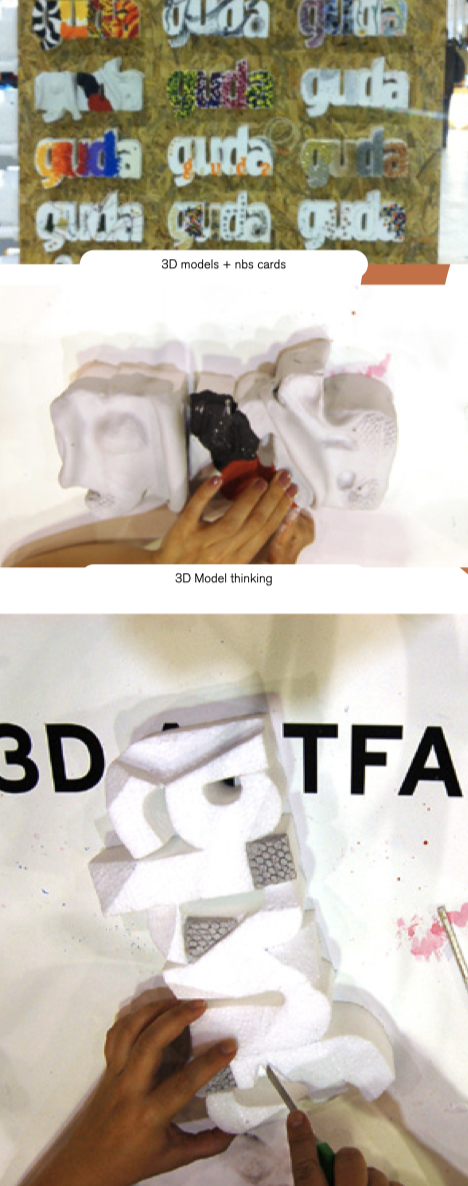
-
1
CO-DIAGNOSTIC
It supports the engagement of the citizens and stakeholders in new projects, as URBiNAT.
Depending on the goal, participants share knowledge, express needs and perceptions. It was associated with different tools, as 3D model thinking.
-
2
CO-DESIGN
Community workshop were organized to co-design ideas and proposals that were selected in the previous meetings. Participants used 3D models, and design thinking to develop the new NBS. Technical experts were invited to support. Meetings were physical or online, using digital tools as MIRO.
-
3
CO-MONITORING
Workshops will be organized to discuss the impact of the NBS implementation, the best practices and barriers.
Best Practices and References
LINKS:
URBiNAT Community Based Artes Projects in Porto, Høje-Taastrup and Brussels In Porto, the community by arts methodology was planned as a public event to test the NBS proposed by citizens, it was called “Experimento”. Due to COVID19 restrictions it was postponed.


